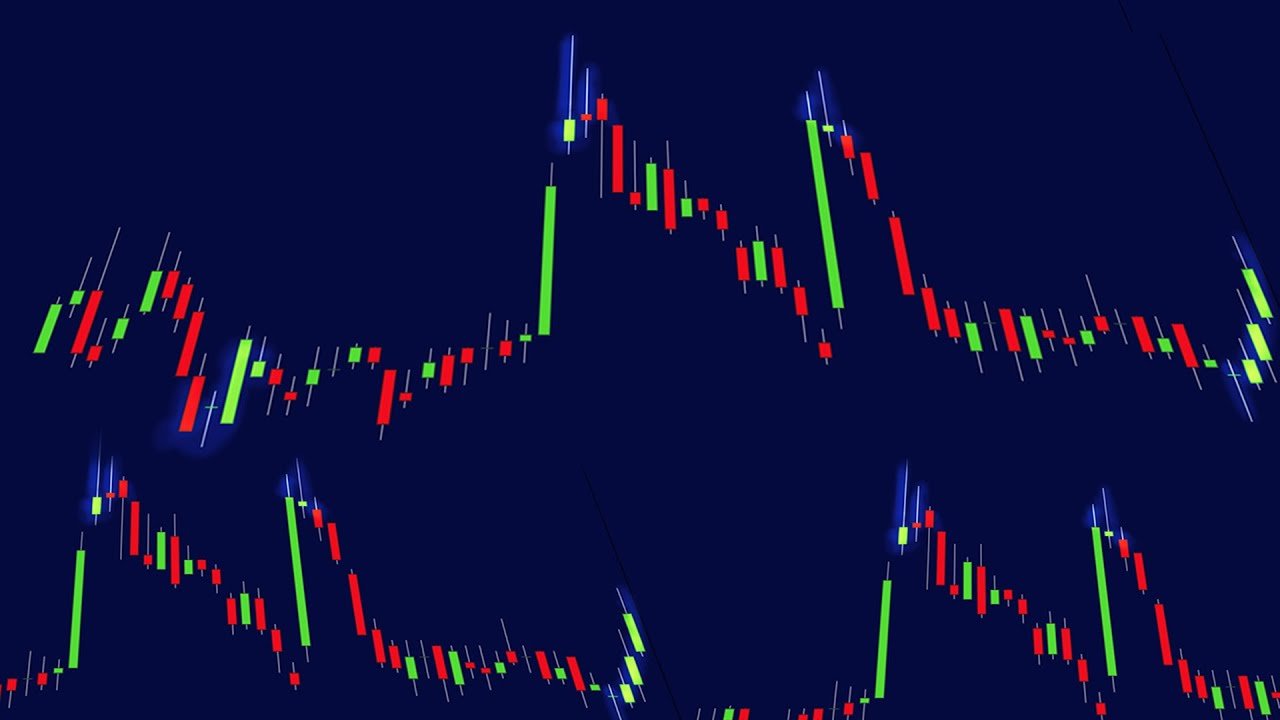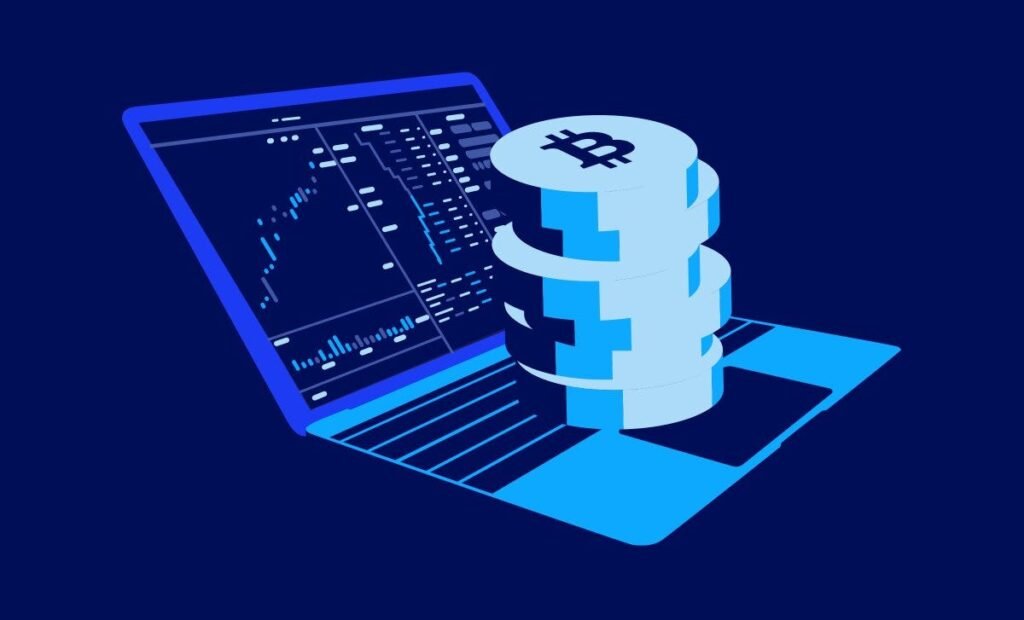The cryptocurrency market has evolved dramatically, with altcoins representing some of the most exciting investment opportunities available today. However, navigating this volatile landscape requires more than luck—it demands a solid understanding of technical analysis. This comprehensive altcoin technical analysis tutorial will equip you with the essential skills needed to read charts, identify patterns, and make informed trading decisions in the dynamic world of alternative cryptocurrencies.
Whether you’re a beginner looking to understand the basics or an intermediate trader seeking to refine your analytical skills, this tutorial covers everything from fundamental chart reading to advanced pattern recognition. By mastering these techniques, you’ll be able to spot potential entry and exit points, manage risk effectively, and develop a systematic approach to altcoin trading that goes beyond emotional decision-making.
Understanding the Fundamentals of Altcoin Technical Analysis
What Makes Altcoin Analysis Different
Altcoin technical analysis shares many principles with traditional financial markets, but the cryptocurrency space presents unique challenges and opportunities. Unlike established markets, altcoins often experience extreme volatility, lower liquidity, and can be influenced by factors specific to the blockchain ecosystem such as network upgrades, partnerships, and regulatory developments.
The key to successful altcoin analysis lies in understanding that these digital assets operate in a 24/7 global market with no trading halts or circuit breakers. This continuous trading environment means that price movements can be swift and dramatic, making technical analysis tools even more crucial for identifying trends and potential reversal points.
Essential Chart Types and Timeframes
Before diving into specific indicators and patterns, it’s important to understand the different chart types available for altcoin analysis. Candlestick charts are the most popular choice among crypto traders, as they provide comprehensive information about price action within specific time periods. Each candlestick shows the opening price, closing price, highest price, and lowest price for a given timeframe.
Line charts offer a simplified view of price movements by connecting closing prices, making them useful for identifying long-term trends. Bar charts provide similar information to candlesticks but in a different visual format. For altcoin analysis, most traders prefer candlestick charts due to their ability to reveal market sentiment and potential reversal patterns.
Timeframes play a crucial role in technical analysis effectiveness. Short-term traders might focus on 1-minute to 1-hour charts for quick scalping opportunities, while swing traders typically analyze 4-hour to daily charts. Long-term investors often examine weekly and monthly charts to identify major trends and support/resistance levels.
Core Technical Indicators for Altcoin Analysis
Moving Averages and Trend Identification
Moving averages form the backbone of trend analysis in altcoin trading. The Simple Moving Average (SMA) calculates the average price over a specific number of periods, while the Exponential Moving Average (EMA) gives more weight to recent prices, making it more responsive to current market conditions.
The most commonly used moving averages in crypto analysis are the 20-day, 50-day, and 200-day periods. When an altcoin’s price trades above these moving averages, it typically indicates an uptrend, while trading below suggests a downtrend. The golden cross—when the 50-day MA crosses above the 200-day MA—is considered a bullish signal, while the death cross (50-day MA crossing below 200-day MA) suggests bearish sentiment.
Moving average convergence divergence (MACD) combines multiple moving averages to generate buy and sell signals. This oscillator consists of the MACD line, signal line, and histogram, helping traders identify momentum changes and potential trend reversals in altcoin prices.
Relative Strength Index (RSI) and Momentum Analysis
The Relative Strength Index is a momentum oscillator that measures the speed and magnitude of price changes, ranging from 0 to 100. In altcoin analysis, RSI values above 70 typically indicate overbought conditions, suggesting a potential price correction, while values below 30 suggest oversold conditions and possible buying opportunities.
However, in strong trending markets—common with altcoins during bull runs—RSI can remain in overbought or oversold territory for extended periods. Advanced traders use RSI divergence, where the indicator moves in the opposite direction of price, to identify potential reversal points before they become apparent in price action.
Stochastic oscillator provides similar momentum insights but uses a different calculation method, comparing the closing price to the price range over a specific period. This indicator is particularly useful for identifying potential reversal points in ranging altcoin markets.
Chart Patterns and Price Action Analysis

Support and Resistance Levels
Support and resistance levels represent psychological price points where buying or selling pressure tends to emerge. In altcoin markets, these levels often coincide with previous significant highs and lows, round numbers, or major moving averages. Strong support levels can provide buying opportunities when prices approach these areas, while resistance levels may offer selling opportunities.
Volume analysis enhances the reliability of support and resistance levels. High-volume breakouts above resistance or below support are generally more reliable than low-volume movements. When analyzing altcoins, pay attention to volume spikes during key level tests, as they often precede significant price movements.
Horizontal support and resistance levels are the most basic type, but traders should also consider dynamic levels created by trendlines and moving averages. These dynamic levels can provide more timely signals in trending markets, which are common in the altcoin space.
Triangle Patterns and Breakout Strategies
Triangle patterns are among the most reliable chart formations in altcoin technical analysis. Ascending triangles form when price creates higher lows while facing resistance at a specific level, typically indicating bullish pressure building. Descending triangles show lower highs with support at a specific level, often suggesting bearish momentum.
Symmetrical triangles occur when both support and resistance lines converge, indicating market indecision. The breakout direction from symmetrical triangles often determines the next significant price movement. Volume confirmation is crucial for triangle pattern breakouts—genuine breakouts typically occur with above-average volume.
The measured move technique helps estimate price targets after triangle breakouts. By measuring the height of the triangle at its widest point and projecting this distance from the breakout point, traders can establish realistic profit targets for their altcoin positions.
Advanced Pattern Recognition for Altcoins
Head and Shoulders Formations
Head and shoulders patterns are reversal formations that signal potential trend changes in altcoin prices. The classic head and shoulders pattern consists of three peaks, with the middle peak (head) being higher than the surrounding peaks (shoulders). This pattern typically forms at the end of uptrends and suggests bearish reversal.
The inverse head and shoulders pattern appears at trend bottoms and indicates potential bullish reversal. The neckline—drawn by connecting the lows between the shoulders and head—serves as a critical level. Breakouts below the neckline in regular head and shoulders patterns, or above in inverse patterns, often trigger significant price movements.
Volume analysis enhances head and shoulders pattern reliability. Ideally, volume should decrease during the formation of the head and increase during the neckline breakout. This volume pattern confirms the shift in market sentiment that the formation represents.
Double Tops and Double Bottoms
Double top patterns form when an altcoin reaches a similar high twice with a moderate decline in between, suggesting that buyers are losing momentum at that price level. The pattern completes when price breaks below the intermediate low, often triggering a bearish reversal.
Double bottom patterns are the bullish counterpart, forming when an altcoin tests a similar low twice before bouncing higher. The pattern confirms when price breaks above the intermediate high between the two bottoms. These patterns are particularly relevant in altcoin markets due to the psychological significance of round numbers and previous significant levels.
Time frame analysis is crucial for double top and double bottom patterns. Patterns that develop over longer periods generally have more significance than those that form quickly. Additionally, the depth of the decline or advance between the two peaks or troughs affects the pattern’s reliability.
Volume Analysis in Altcoin Trading

Understanding Volume Patterns
Volume represents the number of shares or tokens traded during a specific period and provides crucial insights into market sentiment and trend strength. In altcoin analysis, volume patterns often precede price movements, making them valuable leading indicators.
Rising volume during uptrends confirms bullish sentiment, while declining volume may suggest weakening momentum. Conversely, high volume during downtrends indicates strong selling pressure, while low volume declines might represent temporary corrections rather than major reversals.
Volume spikes often occur at significant price levels or during important news events. These spikes can signal the beginning of new trends or the end of existing ones. Traders should pay particular attention to volume during breakouts from chart patterns, as high-volume breakouts are generally more reliable.
Volume-Based Indicators
On-Balance Volume (OBV) is a cumulative indicator that adds volume on up days and subtracts volume on down days. OBV helps identify the flow of volume and can reveal divergences between price and volume that suggest potential reversals.
Volume-Weighted Average Price (VWAP) calculates the average price weighted by volume, providing insight into the fair value of an altcoin during a trading session. Prices above VWAP suggest bullish sentiment, while prices below indicate bearish pressure.
The Volume Rate of Change (VROC) measures the percentage change in volume over a specific period, helping identify when volume is expanding or contracting relative to recent levels. Sudden increases in VROC often precede significant price movements in altcoins.
Risk Management and Position Sizing
Setting Stop Losses and Take Profits
Effective risk management is crucial for long-term success in altcoin trading. Stop losses should be placed at logical levels based on technical analysis rather than arbitrary percentages. Common stop loss placement techniques include below recent swing lows for long positions or above recent swing highs for short positions.
The risk-reward ratio is a fundamental concept that compares potential losses to potential gains. A minimum 1:2 risk-reward ratio means that for every dollar risked, the potential profit should be at least two dollars. This approach allows traders to remain profitable even with a lower win rate.
Take profit levels should also be based on technical analysis, such as previous resistance levels, Fibonacci retracements, or measured moves from chart patterns. Scaling out of positions allows traders to lock in profits while maintaining exposure to potential further gains.
Position Sizing Strategies
Position sizing determines how much capital to allocate to each altcoin trade. The 1% rule suggests risking no more than 1% of total capital on any single trade, helping preserve capital during losing streaks. More aggressive traders might risk 2-3%, but exceeding 5% per trade is generally considered excessive.
The Kelly Criterion provides a mathematical approach to position sizing based on win rate and average win/loss ratios. While complex to calculate, this method can optimize returns while managing drawdowns for traders with consistent strategies.
Correlation analysis is particularly important in altcoin portfolios, as many alternative cryptocurrencies move in similar patterns during market-wide trends. Diversifying across uncorrelated assets helps reduce overall portfolio risk.
Market Structure and Trend Analysis
Identifying Market Phases
Altcoin markets typically cycle through four phases: accumulation, markup, distribution, and markdown. Understanding these phases helps traders align their strategies with current market conditions and avoid fighting against dominant trends. The accumulation phase occurs after significant declines when smart money begins building positions while retail sentiment remains bearish. This phase is characterized by sideways price action with gradually decreasing volume and volatility.
The markup phase represents the trending portion of bull markets when prices advance consistently. During this phase, pullbacks are shallow and brief, while breakouts are strong and sustained. Most trend-following strategies perform best during markup phases. Distribution phases occur at market tops when early adopters begin taking profits while retail enthusiasm peaks. This phase often features increased volatility, false breakouts, and diverging technical indicators.
Markdown phases represent bear markets when prices decline consistently. During these periods, rallies are weak and short-lived, while breakdowns are strong and sustained. Counter-trend strategies and short selling can be profitable during markdown phases.
Also Read: Altcoin Venture Capital Funding Complete Guide to Crypto Investment Strategies 2025
Fibonacci Analysis and Retracement Levels
Understanding Fibonacci Ratios
Fibonacci retracements are based on mathematical ratios found throughout nature and have proven remarkably effective in financial markets, including altcoins. The key retracement levels are 23.6%, 38.2%, 50%, 61.8%, and 78.6%.
The 38.2% and 61.8% levels are considered the most significant, often acting as support during uptrends or resistance during downtrends. The 50% retracement, while not technically a Fibonacci level, represents a psychological midpoint that frequently provides support or resistance. Fibonacci extensions help identify potential profit targets beyond the original trend.
Common extension levels include 127.2%, 161.8%, and 261.8%, which often coincide with significant price objectives in altcoin movements. When multiple Fibonacci levels from different swings converge at similar prices, these confluence zones become particularly important. Such areas often provide strong support or resistance and can serve as high-probability entry or exit points.
Practical Application and Trading Strategies
Developing a Trading Plan
A comprehensive trading plan serves as a roadmap for consistent altcoin trading success. The plan should define entry criteria, exit strategies, risk management rules, and position sizing guidelines. Written plans help eliminate emotional decision-making during volatile market conditions. Entry criteria should be specific and objective, such as “uy when price breaks above the 20-day EMA with RSI above 50 and volume 50% above average.
This specificity helps traders avoid subjective interpretations that can lead to inconsistent results. Exit strategies should address both profit-taking and loss-cutting scenarios. Predetermined exit levels based on technical analysis help traders stick to their plans rather than making emotional decisions in the heat of the moment.
Backtesting and Strategy Validation
Backtesting involves applying trading strategies to historical price data to evaluate their effectiveness. This process helps identify which technical analysis techniques work best for specific altcoins or market conditions. Paper trading allows traders to practice their strategies in real-time without risking capital.
This approach helps refine entry and exit timing while building confidence in the chosen methodology. Strategy validation should include various market conditions, from trending to ranging markets. Strategies that only work in specific conditions may fail when market dynamics change, which is common in the altcoin space.
Psychological Aspects of Technical Analysis
Overcoming Emotional Trading
Emotional trading represents one of the biggest obstacles to successful altcoin analysis. Fear of missing out (FOMO) can lead to buying at tops, while fear of further losses can cause selling at bottoms. Technical analysis provides objective frameworks for making decisions, but traders must maintain discipline to follow their systems. Confirmation bias leads traders to seek information that supports their existing positions while ignoring contradictory evidence.
Successful technical analysts remain open to changing their views when the evidence suggests they are wrong. Overconfidence after successful trades can lead to increased position sizes or abandoning risk management rules. Maintaining consistent risk management regardless of recent performance is crucial for long-term success.
Building Trading Discipline
Developing trading discipline requires consistent application of predetermined rules regardless of market conditions or emotional state. This discipline separates successful traders from those who struggle with inconsistent results. Keeping a trading journal helps identify patterns in decision-making and areas for improvement.
Recording not just what trades were made, but also the reasoning behind them and emotional state at the time, provides valuable insights for development. Regular review and analysis of trading performance help identify strengths and weaknesses in both technical analysis skills and psychological management. This continuous improvement process is essential for long-term success in altcoin trading.
Technology and Tools for Analysis

Choosing the Right Platform
Modern altcoin technical analysis requires sophisticated charting platforms that provide comprehensive tools and real-time data. Popular platforms include TradingView, Coinigy, and exchange-specific tools like Binance’s advanced charts. Key features to consider include the availability of technical indicators, drawing tools, multiple timeframe analysis, and alert systems.
The ability to create custom indicators or import community-developed tools can enhance analysis capabilities. Mobile accessibility is increasingly important for altcoin traders who need to monitor positions and market conditions while away from their computers. Many platforms offer mobile apps with full charting capabilities.
Automated Analysis Tools
Algorithmic scanning tools can help identify altcoins meeting specific technical criteria across large numbers of assets. These tools can scan for chart patterns, indicator conditions, or custom combinations of factors. Alert systems notify traders when predetermined conditions are met, such as price breakouts, indicator crossovers, or volume spikes.
This automation enables traders to monitor multiple altcoins simultaneously, eliminating the need for constant manual checking. While automated tools can enhance efficiency, they should supplement rather than replace human analysis. The context and nuance required for successful trading still require human judgment and interpretation.
Advanced Concepts and Professional Techniques
Multi-Timeframe Analysis
Professional altcoin analysts use multiple timeframes to gain a comprehensive market perspective. The general rule is to identify the trend on a higher timeframe and then drop to lower timeframes for precise entry and exit timing. For example, a trader might identify an uptrend on the daily chart, then use the 4-hour chart to find pullback opportunities and the 1-hour chart for exact entry timing.
This approach combines the reliability of longer timeframes with the precision of shorter ones. Timeframe alignment occurs when multiple timeframes show similar signals, increasing the probability of successful trades. Conflicting signals between timeframes often indicate market uncertainty and may suggest waiting for clearer setups.
Intermarket Analysis
Altcoin prices are influenced by broader market factors, including Bitcoin’s performance, traditional financial markets, and macroeconomic conditions. Understanding these relationships helps provide context for technical analysis. Bitcoin often leads altcoin movements, particularly during significant trend changes.
Analyzing Bitcoin’s technical condition can provide insights into potential altcoin performance, especially during market-wide corrections or rallies. Correlation analysis between different altcoins helps identify which assets move together and which provide genuine diversification. This analysis is particularly important during risk-off periods when correlations tend to increase.
Common Mistakes and How to Avoid Them
Analysis Paralysis
Over-analysis can prevent traders from taking action when clear opportunities present themselves. While thorough analysis is important, excessive complexity often reduces rather than improves trading performance. Focusing on too many indicators can create conflicting signals that make decision-making difficult. Most successful traders use a limited set of complementary tools rather than attempting to incorporate every available indicator.
Ignoring Market Context
Technical analysis should be considered within the broader market context. News events, regulatory developments, and macroeconomic factors can override technical signals, particularly in the cryptocurrency space. Blindly following technical indicators without considering fundamental factors or market sentiment can lead to poor timing and unexpected losses. The best technical analysis incorporates multiple sources of information.
Conclusion
Mastering altcoin technical analysis requires dedication, practice, and continuous learning. This comprehensive tutorial has covered the essential concepts, from basic chart reading to advanced pattern recognition and risk management strategies. The key to success lies not just in understanding these techniques, but in applying them consistently with proper risk management and emotional discipline.
As you continue developing your skills, remember that technical analysis is both an art and a science. While the tools and patterns remain consistent, their interpretation and application require experience and judgment that develop over time. Start with the fundamental concepts covered in this altcoin technical analysis tutorial, practice with paper trading, and gradually build your confidence before committing significant capital.
The cryptocurrency market continues evolving, and staying updated with new developments and refining your analytical skills will be crucial for long-term success. Begin implementing these techniques today, and take the first step toward becoming a proficient altcoin technical analyst.

